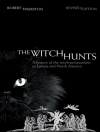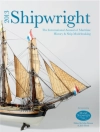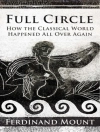A striking and famous feature of the English landscape, Dartmoor is a beautiful place, with a sense of wildness and mystery. This book provides a new perspective on an important aspect of Dartmoor’s past. Its focus is transhumance: the seasonal transfer of grazing animals to different pastures.
In the Middle Ages, intensive practical use was made of Dartmoor’s resources. Its extensive moorlands provided summer pasture for thousands of cattle from the Devon lowlands, which flowed in a seasonal tide, up in the spring and down in the autumn. This book describes, for the first time, the social organisation and farming practices associated with this annual transfer of livestock. It also presents evidence for a previously unsuspected Anglo-Saxon pattern of transhumance in which lowland farmers spent the summers living with their cattle on the moor.
Winner of the Devon Book of the Year Award 2013.
Содержание
List of Colour Plates
List of Figures
List of Tables
Editors’ Acknowledgements
Abbreviations
Introduction by Christopher Dyer and Matthew Tompkins
1. Definitions and limitations
Defining Dartmoor’s resources
Dartmoor and its parts
Transhumance and its types
Limitations of this book
2. The red tides: impersonal transhumance and the central moor
The central moor: ownership and commoners
Distances travelled and middlemen
Pastoral management: the herdsman’s year
Livestock: numbers and types
3. The red tides: impersonal transhumance and the outer moors
Ownership and commoners
Pastoral management: drifts, structures, strays
Perambulation and dispute resolution
Order and disorder: outer moors and the central moor
4. Personal transhumance: distant detachments
Cockington and Dewdon
Ipplepen, Abbotskerswell and their links
Detached parts of the hundreds of Exminster, Wonford and Kerswell
Kenton with Heatree
Paignton and its parts
Lifton and Sourton
Northlew, Venn and Lettaford
Tavistock and Cudlipp
Bickleigh and Sheepstor
The significance of the detachments
5. Personal transhumance: archaeology, topography, place-names
and history
Archaeology and topography
Place-names and history: economy and society
6. Domesday Book and beyond: the transition from personal to impersonal transhumance
The role of colonists
The role of lords
The role of the Crown
7. Dartmoor and beyond
Droveways
Pastoral husbandry
The implications of transhumance for lowland farming
Conclusion by Christopher Dyer and Matthew Tompkins
Notes
Bibliography
Index
Об авторе
The late Harold Fox was born and brought up in South Devon, and was Professor of Social and Landscape History at the Centre for English Local History, University of Leicester. He was a recognised authority on late-medieval landscape, agrarian and social history, particularly in the South-West and Midlands, and had served as president of the Medieval Settlement Research Group, chairman of the Society for Landscape Studies, vice-president of the English Place-Names Society and president of the Devon History Society. Sadly he died before completing the final stages of this book, but two colleagues from the University of Leicester’s Centre for English Local History have brought it to the point of publication.
Matthew Tompkins is Honorary Visiting Fellow at the Centre for English Local History, University of Leicester. Christopher Dyer is Emeritus Professor at the Centre for English Local History, University of Leicester.












